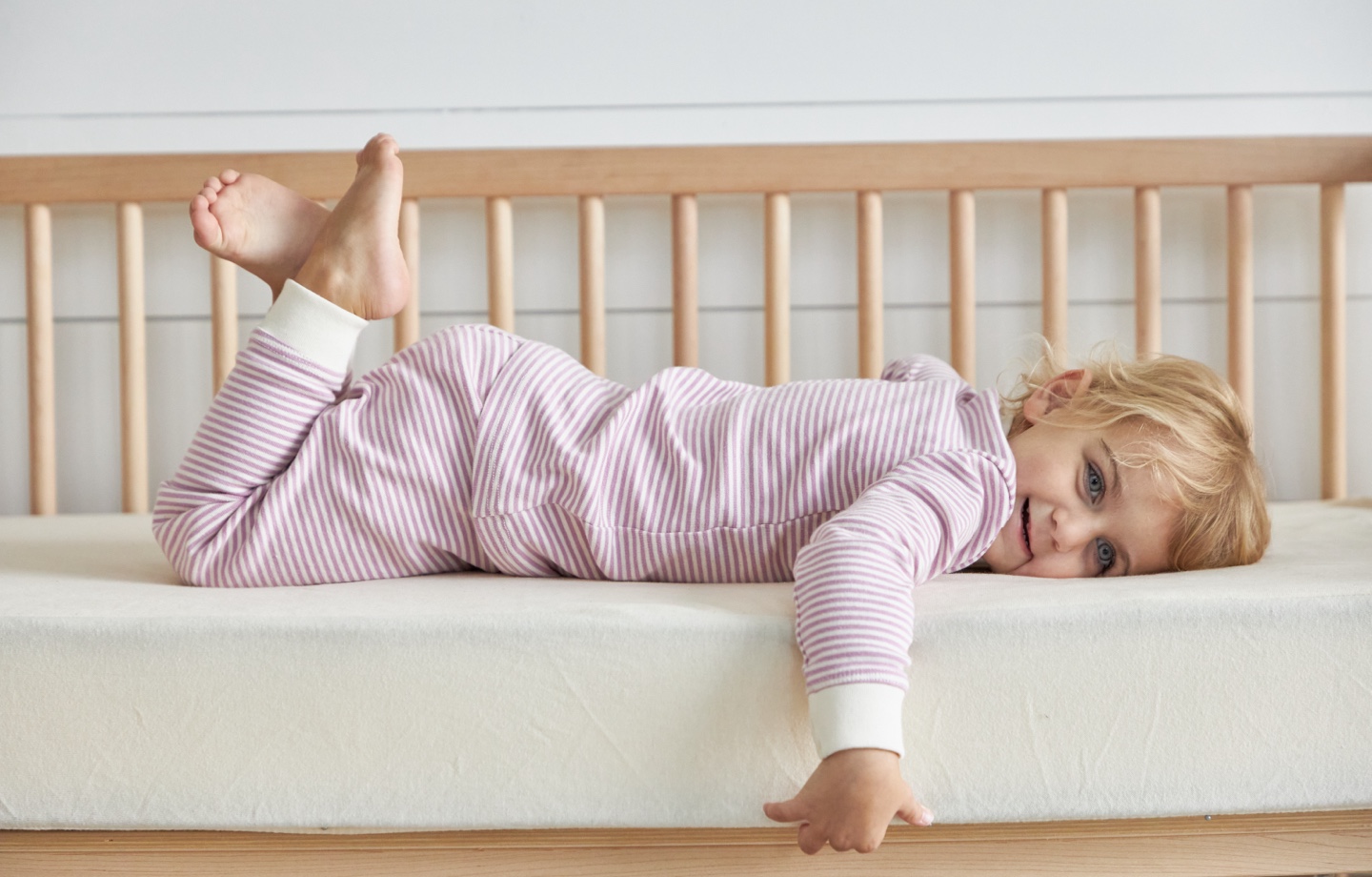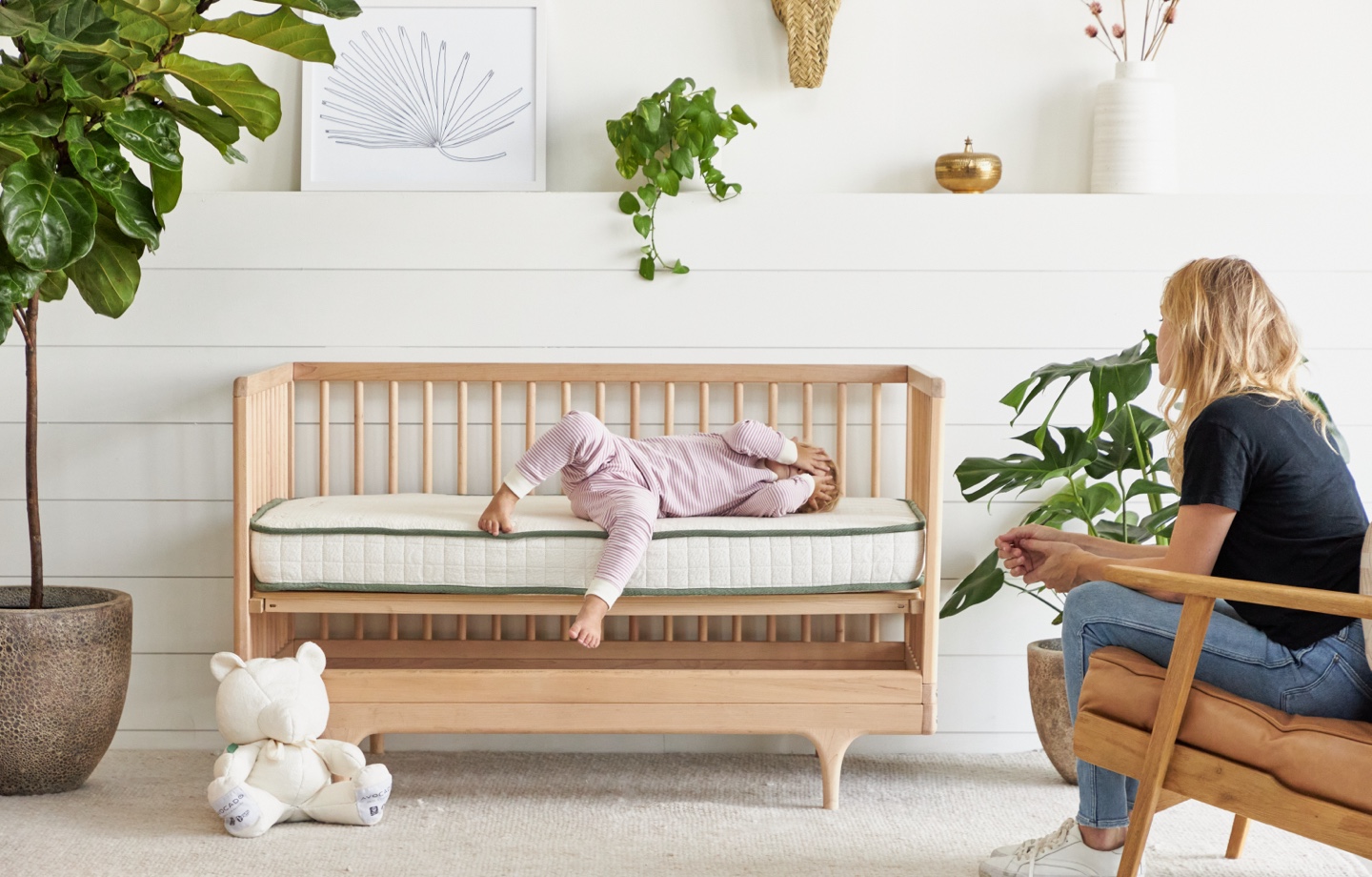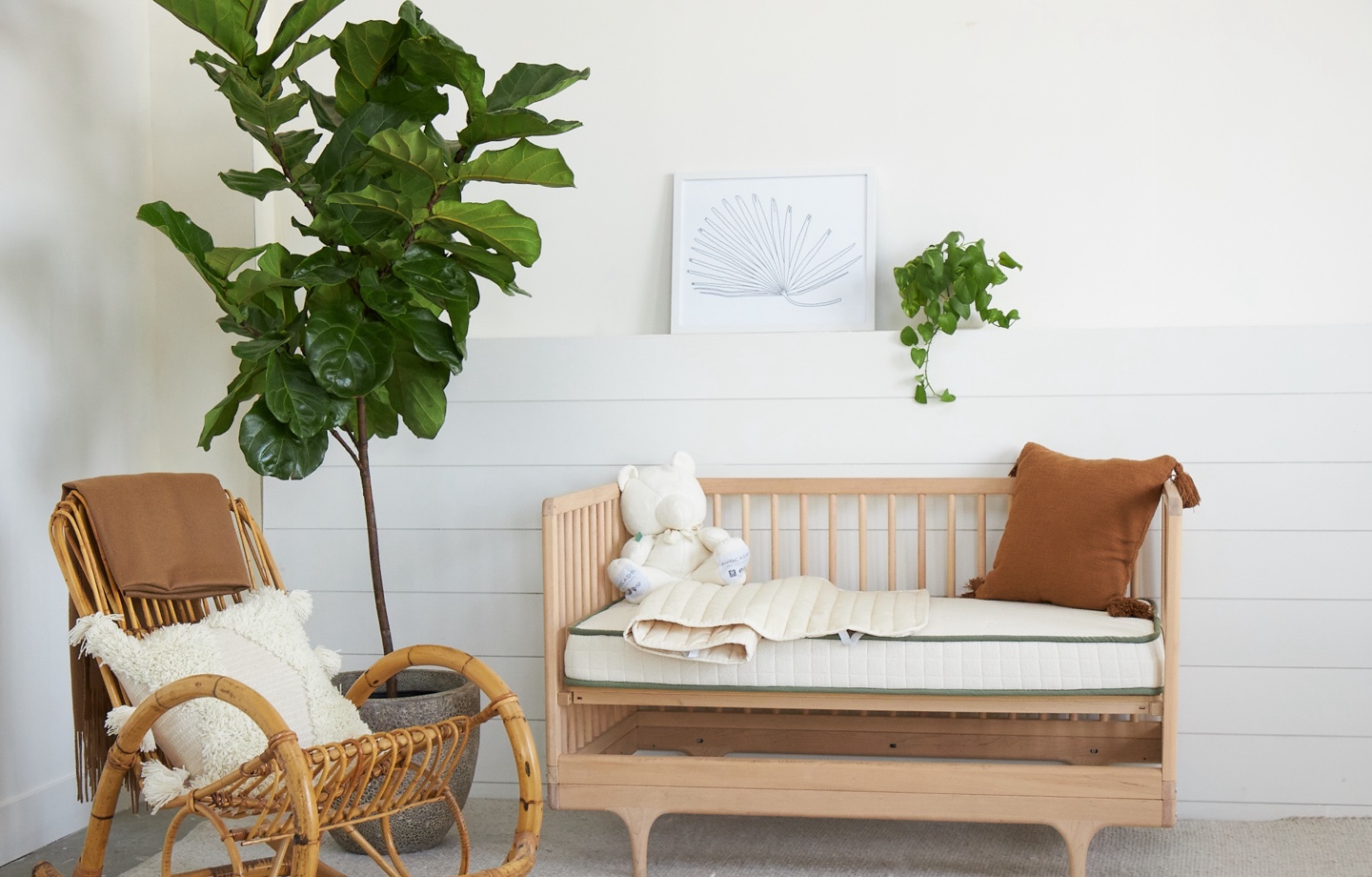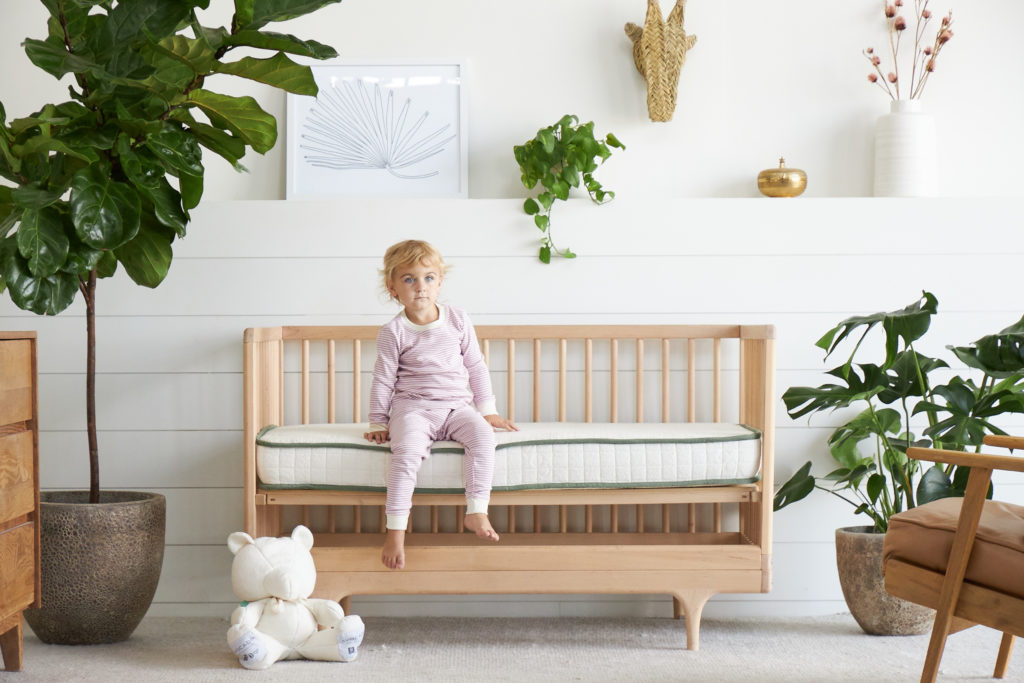Most children have difficulty sleeping at some point. We spoke to an expert about how to help your child develop healthy sleep habits.
Sleep regression, waking up in the night, problems napping, establishing a sleep schedule. No matter what stage of life your child is in — whether they’re a few months old, just starting to walk, or are a full-fledged toddler — getting them to go to sleep (and stay asleep) can be an overwhelming and frustrating process. But child sleep issues are more common than you think, and there are a handful of proven ways to address them.
We polled our audience and parents on the Avocado team to get their most pressing child sleep questions, then took them to child sleep expert Kelly Murray. Here are Kelly’s tried-and-true methods to help your child develop healthy sleep habits. We hope these sleep tips translate into more sleep for you and your families.
 Kelly Murray is a certified pediatric and adult sleep consultant and owner of Kelly Murray Sleep Consulting. With the help of her team, she has served more than 1,000 families in Chicago and beyond who are overwhelmed by the sleep training process and need the support and help of trained professionals. Her team customizes their approach based on your parenting style and your child’s temperament and offer education on the science behind their process so they can successfully solve their child’s sleep issues and the entire family can get the sleep they need to be their best.
Kelly Murray is a certified pediatric and adult sleep consultant and owner of Kelly Murray Sleep Consulting. With the help of her team, she has served more than 1,000 families in Chicago and beyond who are overwhelmed by the sleep training process and need the support and help of trained professionals. Her team customizes their approach based on your parenting style and your child’s temperament and offer education on the science behind their process so they can successfully solve their child’s sleep issues and the entire family can get the sleep they need to be their best.
Read more: How to Get More Sleep As a New Mom
KM: Usually, I find the reason toddlers aren’t staying in their bed overnight is because the parents are typically in the room with them as they fall asleep. They’re either sitting in the room or laying in bed with the kiddo. What happens is the child then has an association between sleep and their parents. When they wake up in between sleep cycles, they expect their parent to be there because their parent was there at bedtime. When they aren’t, it’s alarming.
Any changes in our environment overnight are alarming and trigger the fight or flight reflex. When the kiddo wakes up, they need their parent again in order to fall asleep. The solution is to teach your child how to fall asleep independently.
KM: If your baby is under 7 to 8 months, instead of trying to establish a clock schedule, what I recommend is using wake windows. A wake window refers to the time that your child is awake between naps or before bedtime. It’s really important to use wake windows if your child is sleeping more than twice a day because the nap length can vary. They can’t stay awake very long, so what happens is they can become overtired very easily.
Here’s a Wake Window Guide I use for all my clients:
KM: The first step is to determine the sleep training method that aligns with your family and baby because that is what’s most important. There are a ton of methods out there and the good news is they all work. However, if they don’t align with your parenting philosophy, or are they aren’t a good fit for your baby, you’re not going to be successful.
Here’s a quick summary of the top sleep training methods out there to give you a jumpstart:
- The most hands-on method is the stay in the room approach, where you’re sitting in the room with your child and offering periodic comfort and support until they fall asleep.
- The second is known as either graduated extinction, check and console, the Ferber Method. This is when you put your baby in their crib awake and then leave. You keep doing this until your baby is asleep.
- The third method is what most people think of when they think of sleep training — and that is the cry it out or extinction method. This involves you putting your baby in their crib, walking out, and not going back in. This does work for some families and it has been proven to be safe and effective.
The good news is that if it doesn’t feel right for you, you can use one of the more gentle methods, like the first two. Those are the methods I recommend as a sleep coach and I teach in my online program The Murray Method. (For a limited time, use code Avocado25 for 25 percent off The Murray Sleep Method.)

Read more: Why The ‘Made Safe’ Logo Matters
KM: It is very important. Our kiddos spend more than a third of their lives sleeping on a mattress, so first and foremost, you want to make sure that it’s safe and doesn’t contain harmful chemicals. One reason for that is if their bodies are exposed to toxic chemicals, their bodies have the propensity to become inflamed. When their bodies become inflamed, they produce cortisol, the alert hormone — which is definitely something you want to avoid when they are sleeping because it can cause wake-ups.
Second, it’s wise to choose a mattress that is made of natural fibers like wool. Wool is great when it comes to thermoregulation and it’s going to keep your child at the ideal temperature — not too hot, not too cold, and it’s also moisture-wicking. It goes without saying, my favorite mattresses for kids are the Avocado Organic Crib Mattress or the Avocado Luxury Organic Crib Mattress.
KM: If you have a toddler, I’m sure this sounds familiar. Toddlers are masters when it comes to stalling bedtime. That’s because they’re not looking forward to going to sleep like we are as adults.
What I recommend is sitting down with your kiddo and creating a chart that lists step by step each activity of the bedtime routine. Each night, when you go through the routine, check off each step and don’t deviate from it. When you’re doing the routine with your child, you’re getting their buy-in and they’re going to be more likely to go along with it.
KM: This is a huge milestone. What I find is the most important thing when it comes to a successful transition is readiness. A lot of that has to do with age and maturity level. Usually, if a child is three or older, they are more than ready to handle the responsibility of being in a bed. When they’re younger, they tend to not have a lot of impulse control and it can be really tempting to get out of bed, wander the house, or visit their parents in the middle of the night. That’s not to say that kids under three aren’t capable of staying in their beds, I just find that three is typically the magic age.
There is one exception. Some kids will start to hop out of their cribs at say, two. If you’re dealing with a situation where you’ve even taken the higher side of the crib and faced it outward and your child just won’t stay in their crib, you really have no choice — you have to get rid of the crib because it’s a safety issue.
A good solution is to make the room into a crib, where you strip the room of everything and just have the mattress there and shut the door so they can stay safe.

Read more: How to Design an Eco-Friendly Kids Room
KM: As I mentioned before, first, you want to make sure your toddler is falling asleep independently. Secondly, you need to establish some rules so you have some firm boundaries in place. A lot of times we assume our kiddos know what we expect out of them. Don’t make any assumptions. It’s best to really clearly communicate to them what the rules are.
For example, once the lights are out, you are to lay in the bed quietly. And then what you can do is tie the behavior to a reward. Tell your kiddo, if you do that tonight, you can get a prize in the morning, maybe an M&M or a marshmallow or they get to watch their favorite show. I am not above bribery when it comes to motivating toddlers to behave.
Have feedback on our story? Email us at [email protected] to let us know what you think!

Shop Pillows
The Essential Organic Pillow Collection
Gentle, breathable, non-toxic support.





